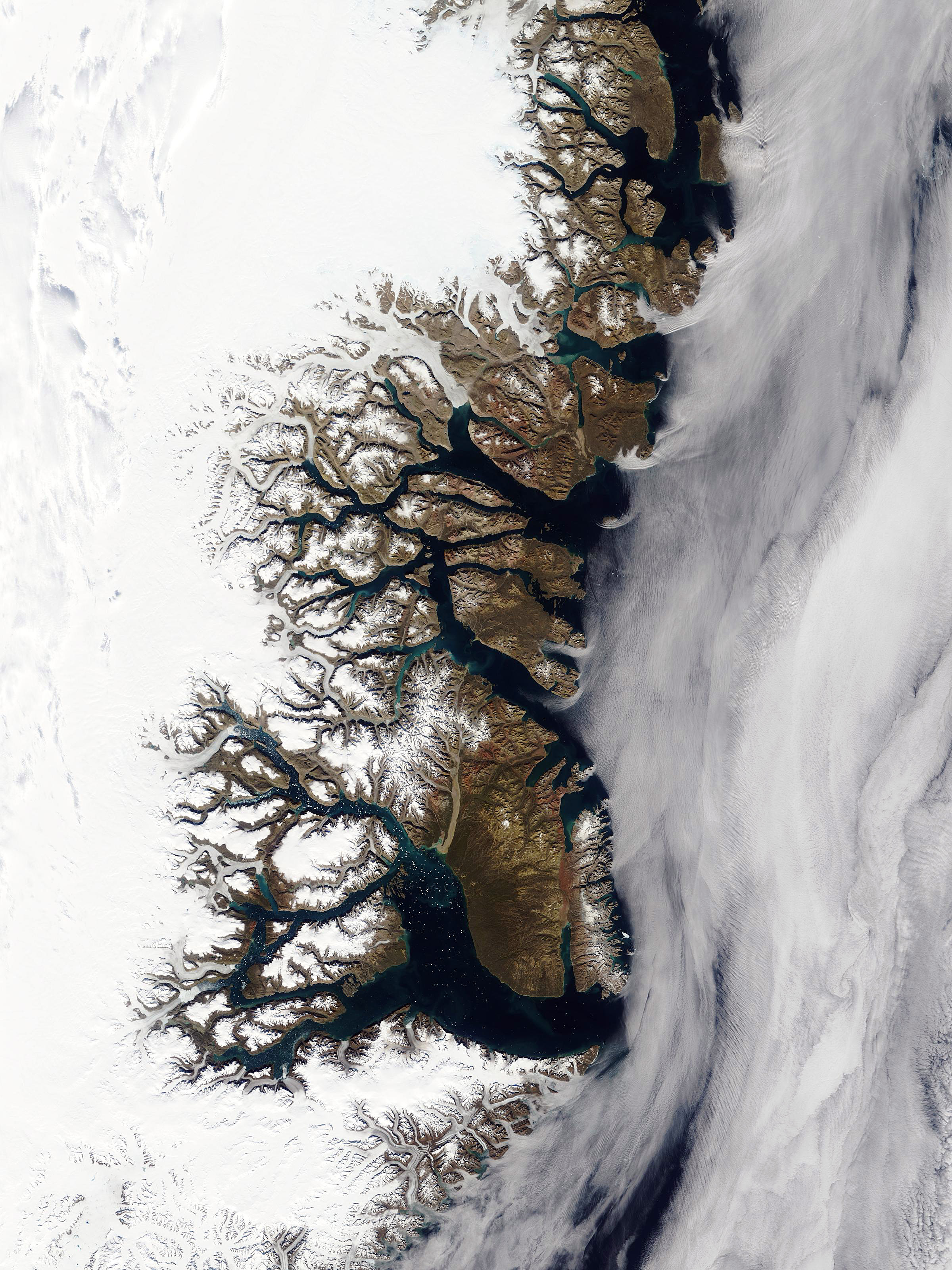 Greenland's eastern coastline wounded by innumerable fjords.
Greenland's eastern coastline wounded by innumerable fjords. Barnett Newman's "First Station" of his Via Crucis (1958).
Barnett Newman's "First Station" of his Via Crucis (1958)."I know that, to the common apprehension, this phenomenon of whiteness is not confessed to be the prime agent in exaggerating the terror of objects otherwise terrible; nor to the unimaginative mind is there aught of terror in those appearances whose awfulness to another mind almost solely consists in this one phenomenon, especially when exhibited under any form at all approaching to muteness or universality. What I mean by these two statements may perhaps be respectively elucidated by the following examples.
First: The mariner, when drawing nigh the coasts of foreign lands, if by night he hear the roar of breakers, starts to vigilance, and feels just enough of trepidation to sharpen all his faculties; but under precisely similar circumstances, let him be called from his hammock to view his ship sailing through a midnight sea of milky whiteness - as if from encircling headlands shoals of combed white bears were swimming round him, then he feels a silent, superstitious dread; the shrouded phantom of the whitened waters is horrible to him as a real ghost; in vain the lead assures him he is still off soundings; heart and helm they both go down; he never rests till blue water is under him again. Yet where is the mariner who will tell thee, "Sir, it was not so much the fear of striking hidden rocks, as the fear of that hideous whiteness that so stirred me?"
Second: To the native Indian of Peru, the continual sight of the snow-howdahed Andes conveys naught of dread, except, perhaps, in the mere fancying of the eternal frosted desolateness reigning at such vast altitudes, and the natural conceit of what a fearfulness it would be to lose oneself in such inhuman solitudes. Much the same is it with the backwoodsman of the West, who with comparative indifference views an unbounded prairie sheeted with driven snow, no shadow of tree or twig to break the fixed trance of whiteness. Not so the sailor, beholding the scenery of the Antarctic seas; where at times, by some infernal trick of legerdemain in the powers of frost and air, he, shivering and half shipwrecked, instead of rainbows speaking hope and solace to his misery, views what seems a boundless church-yard grinning upon him with its lean ice monuments and splintered crosses."

No comments:
Post a Comment